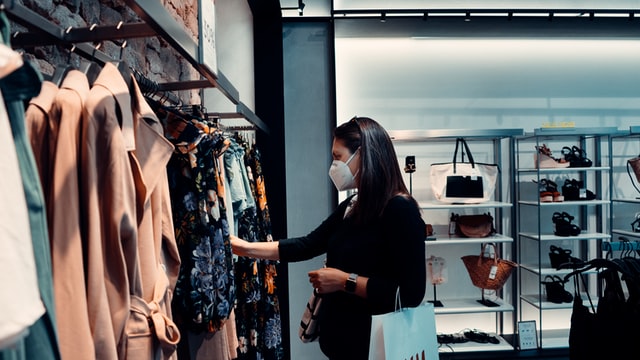The reading note is taking for The Myths and Realities of Retail’s New Normal
CATHALEEN CHEN wrote the original article | Published on Business of Fashion | 04.01.2022
This article mentioned the four gaps between the hope and reality for the retailers to adapt to the new normal. From consumer behaviour change for shopping online and offline, the supply chain management issues, the increased selling price but re-emerging discount culture, and the fad of athleisure won’t leave. Here are the excerpts:
/Excerpt/
Consumers chase the ease and convenience in both shopping online and offline.
Shoppers shifted to shop online in record numbers at the beginning of the pandemic, but the boom is over now. According to the Census Bureau data, online retail sales accounted for 12.4% of total retail in the third quarter of 2021, which dropped from 16% in 2020. Even digital-native brands like Allbirds and Warby Parker also open their new stores in 2021 to scale and combine the online and offline shopping experience. But compared to the stores in 2019, more retailers allow consumers to return or collect their purchases online in their stores. In general, customers expect ease and convenience in online shops and brick-and-mortar retail.
The supply chain crisis is not over and remains a challenge of rising costs and logistics management.
Most retailers feel optimistic about the future of supply chain management when the long lines of shipping containers have begun to drop goods after queuing outside essential ports during the post-pandemic period. However, logistics and empty shelves’ soaring costs don’t resolve the issues. Also, the rising infection rates and labour shortage may make most factories across Asia close again after reopening from shutdowns of the Delta variant. Stores and warehouses are short for staff as well.
Analysts say it will take at least another six months back to normal, and the pandemic may become an annual issue. Managing supply chains and logistics remains a high cost and competitive challenge.
Discount culture is about to go deeper and re-emerge.
Considering the supply chain issues and a booming economy to boost the demand from the market, that allows fashion retailers to raise their prices and put an end to decade-long discounts. According to the US Bureau of Labour Statistics, average apparel prices were up 5% in November 2021 compared to the year prior. However, the delays of supply chains make some retailers have ordered extra inventory. Most analysts say it could lead to the promotion coming back if the demand doesn’t meet expectations.
Athleisure is not over, and everything can go fad.
Sweatpants and leggings champion the pandemic, but customers shift to sexier and dressier catalogues in the post-pandemic. But athleisure and loungewear are still important. The best-sellings for today are to present an individual style rather than fads. Because of heightened social-media activity among consumers during the pandemic, the trends come and go faster than before, and novelty and speed are critical. Borenstein of Reformation predicts that everything can go viral and drop instantly, allowing more creativity and styles to show more characters.
/Thought/
The pandemic triggered the transformation from the supply chain, brand management, marketing strategy and customer behaviour. Everything changed dramatically. People rely on social media more than ever and have built new contact, communication, work, shopping and living. So we can see TikTok, Zoom, and other social media are leveraging and bringing unique pheromones. For example, we can see the micro-trends like Y2K boosting or drama go viral because people spend more time staying home scrolling on their mobile phones or watching shows. (Reading more: Microtrends are a new wave to influence the mass market.)
Furthermore, people start to dig things that we have neglected for a long time and pay more attention to ourselves, whether physically or mentally, or the place we live on like this planet. That’s why the term sustainability became widespread these two years. As I mentioned in Can more discounts or promotions continue to boost sales in 2022?, I think that’s also why some people stop shopping impulsively( and also because we didn’t need a variety of clothes for just staying at home).
As the pandemic isn’t entering its end, everything seems uncertain. So we have seen some brand’s booming during this period but dropped rapidly. For example, a Los Angeles-based clothing brand Entireworld known for its colour and comfortable sweatpants. It was founded in 2018 and thrived in 2020 when most brands struggled with lockdowns. However, it failed to get an acquisition deal to help the financial support like other D2C brands, and it finally closed the brand in October of 2021.

Also, the change in supply chain management is urgent. People have to face not enough workers to work at factories soon, and manufacturing costs keep rising. The cheap labour and low cost of production overseas are gone.
But I think it is hard to say that all the changes will go on because we hope the pandemic will end soon and return to normal life. However, what does NORMAL mean to us? It is time to rethink it.

發佈留言